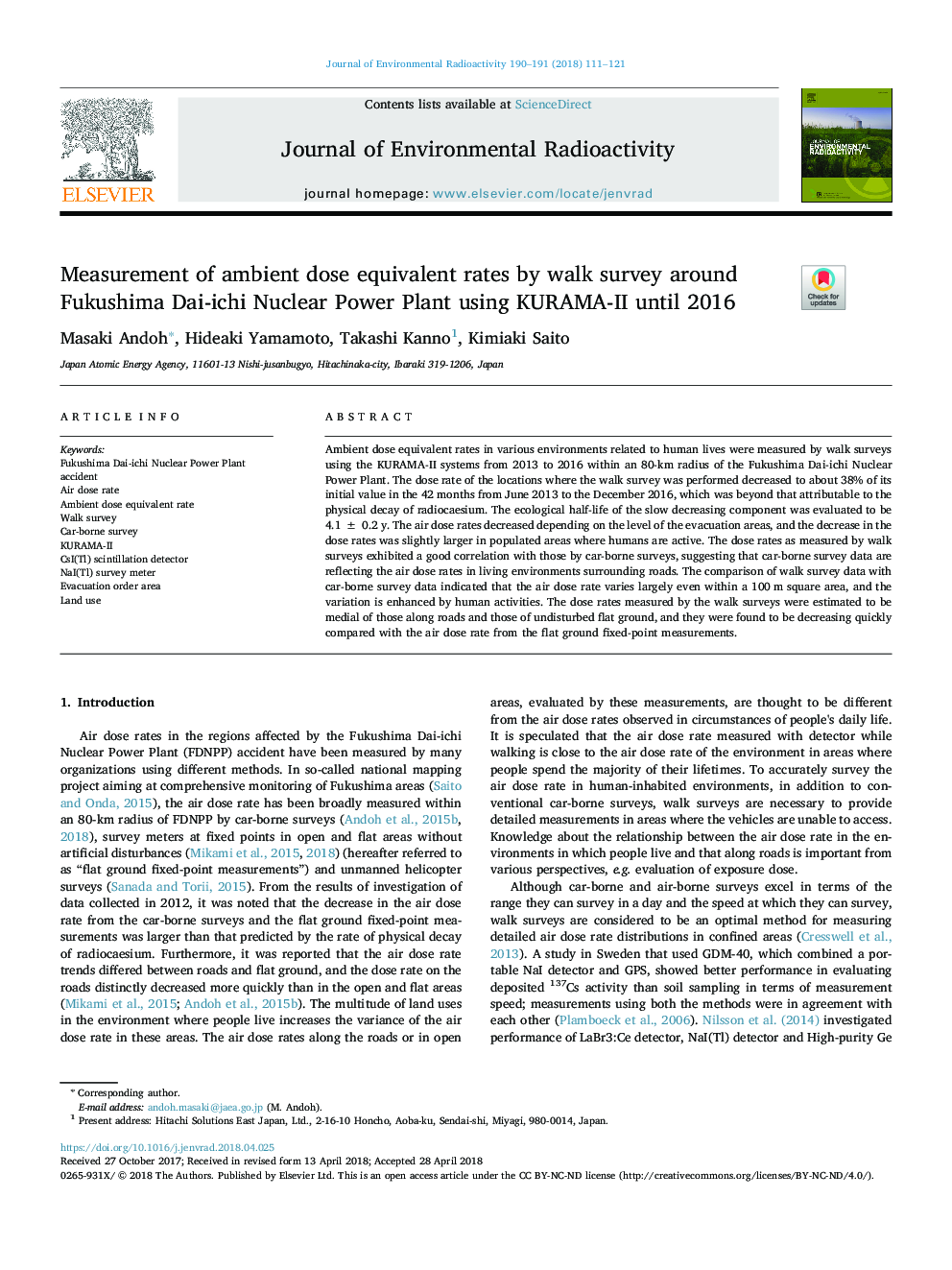| Article ID | Journal | Published Year | Pages | File Type |
|---|---|---|---|---|
| 8080380 | Journal of Environmental Radioactivity | 2018 | 11 Pages |
Abstract
Ambient dose equivalent rates in various environments related to human lives were measured by walk surveys using the KURAMA-II systems from 2013 to 2016 within an 80-km radius of the Fukushima Dai-ichi Nuclear Power Plant. The dose rate of the locations where the walk survey was performed decreased to about 38% of its initial value in the 42 months from June 2013 to the December 2016, which was beyond that attributable to the physical decay of radiocaesium. The ecological half-life of the slow decreasing component was evaluated to be 4.1â¯Â±â¯0.2 y. The air dose rates decreased depending on the level of the evacuation areas, and the decrease in the dose rates was slightly larger in populated areas where humans are active. The dose rates as measured by walk surveys exhibited a good correlation with those by car-borne surveys, suggesting that car-borne survey data are reflecting the air dose rates in living environments surrounding roads. The comparison of walk survey data with car-borne survey data indicated that the air dose rate varies largely even within a 100â¯m square area, and the variation is enhanced by human activities. The dose rates measured by the walk surveys were estimated to be medial of those along roads and those of undisturbed flat ground, and they were found to be decreasing quickly compared with the air dose rate from the flat ground fixed-point measurements.
Keywords
Related Topics
Physical Sciences and Engineering
Energy
Nuclear Energy and Engineering
Authors
Masaki Andoh, Hideaki Yamamoto, Takashi Kanno, Kimiaki Saito,
